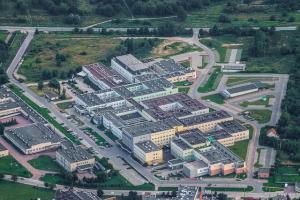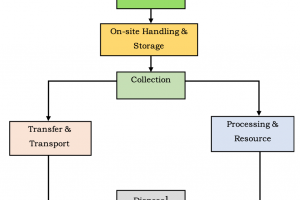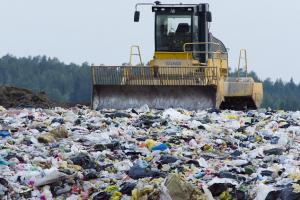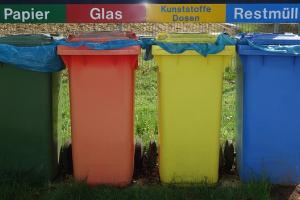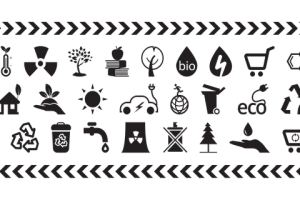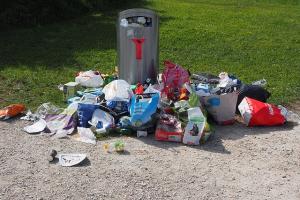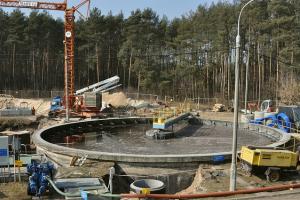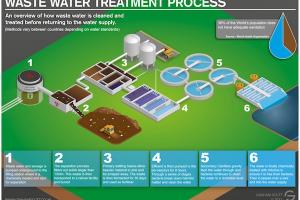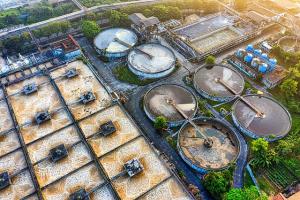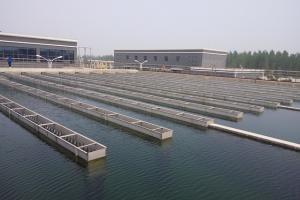Municipal Solid Waste Generation & its Disposal Practices in Pakistan
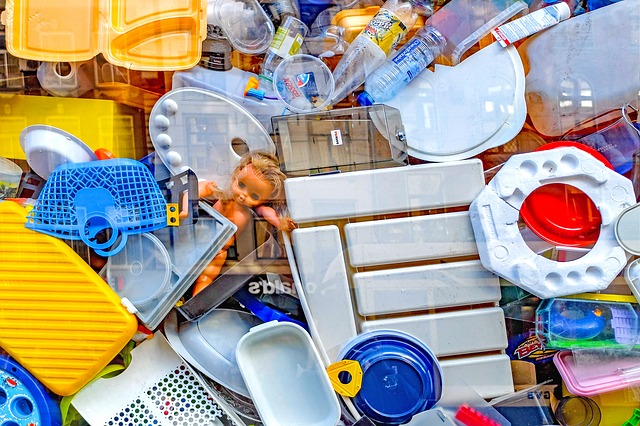
Solid Waste Generation:
Solid waste can be defined as material that no longer has any value to the person who is responsible for it, and is not intended to be discharged through a pipe. It is generated by domestic, commercial, industrial, health care,agricultural and mineral extraction activities and accumulates in streets and public places. The words "garbage", "trash", "refuse" and "rubbish" are used to refer to some forms of solid waste.
Solid Waste - A Consequence of Life:
From the very first day man has used the From resources but it did not pose a significant problem Disposal of waste traced to time when man began to congregate in tribe, villages and communities Waste generation in Technological Society: With industrial revolution in 19th century century conditions in England were so bad that an urban sanitary act was passed in 1888 prohibiting throwing of solid waste into ditches, rivers,and waters.
Present status in Pakistan
- It is estimated that presently, 56,000 tons per day of solid waste is generated in Pakistan.
- No weighing facilities are installed at any disposal sites
- Open burning of waste or open disposal
- Collection 51-69 %
- No Disposal facilities
- A lot of potential for recycling and involvement of private sector which is overlooked
- Hazardous hospital and industrial wastes are being simply treated as ordinary waste
- None of the cities in Pakistan has a proper solid waste management system right from collection of solid waste up to its proper disposal.
- Much of the uncollected waste poses serious risk to public health through clogging of drains, formation of stagnant ponds and providing breeding ground for mosquitoes and flies with consequent risk of malaria and cholera.
What is Solid Waste Management:
As discipline concerns the control of generation, storage, collection, transfer and transport, processing and disposal of solid waste in a manner, that is in accordance with the best principles of public health, economics, engineering, conservation aesthetics, and other environmental considerations, and that is also responsive to public attitudes.
Development of Solid waste Management:
It includes all administrative financial, legal, planning and engineering functions involved in solution of all problems of solid waste.
History:
First book written was "Disposal of Municipal Refuse"1906 telling about waste disposal method:
Methods of Waste Disposal:
- Dumping on land,
- In water,
- Plowing in soil,
- Feeding to animals Hogs,
- Reduction and;
- Incineration
Functional Elements of Solid Waste Management:
SWM grouped into Six:
- Waste generation,
- Waste handling, separation, processing and storage at source
- Collection,
- Separation, processing and transformation,
- Transfer and transport
- Final disposal
1. Waste generation:
It includes all activities in which a material is identified as no longer for use, for throwaway or gathered together for disposal. Example candy wrapping to be thrown outdoor once consumed. Waste generation steps varies with individual. At present waste generation activity is not controllable.
2. Waste handling, separation, processing and storage at source:
Handling consist of all activities likeseparation, processing and storage at sourceandassociated management of SW until they are placed in containers for collection. Handling includes movement of loaded containers to the point of collection, separation at source. On site storage is of primary importance because of public health concern and aesthetic consideration.
3. Collection
It includes not only gathering of solid waste and recyclable but also transport of material after collection to the location where vehicle is emptied.
4. Separation:
Includes recovery of separated material, separation and processing, components and transformation that occurs primarily in the locations away from the source of generation. Transformation here is used to reduce the volume and weight is reduced and requiring disposal, resource conservation products and finally energy. It can be achieved by a variety of chemical and biological processes like composting.
5. Transfer and Transport
- it involves transfer of waste from smaller collection vehicles, to larger transport vehicles/equipments
- subsequent transport of waste usually to long distance to a processing or disposal site
6. Disposal
Disposal of Soild Waste is the last step in solid waste management-land filling or land spreading either directly from source or after processing and recovery of materials, residues of combustion. A modern landfill is not a dump but an engineered facility used for disposing of solid waste on land or within the earths mantle without creating nuisance or hazards to public health or safety
Sources of Solid Waste:
It includes:
- Residential areas
- Commercial areas
- Institutions
- Industries
- Construction and demolition activities
- Municipal services
- Agricultural activities
- Treatment plants
1. Residential And commercial Waste:
This type of waste is generated from residential areas
- Organic (combustible) and non-organic, includes food, paper, plastics, textile, garden trimmings, glass, household hazardous waste
- Commercial generated from stores, restaurants, hotels, markets, offices, service stations, auto workshops, print shops e.t.c.
- includes Paper, cardboard, wood, glass, plastic, special waste.
- Commingled mixed wastes not separated at the source
- Putresciblewaste that will decompose rapidly, primarily food
3. Institutional Waste:
- Generated by government buildings, schools, prisons and hospitals
- Does not include medical waste which are typically incinerated and manufacturing wastes from prison
4. Industrial Solid Waste:
- Comes from processing and non-processing industries and utilities. Composition is site specific and depends upon the raw material, processor used and markets which provide the base for a given industrial activity.
- Industrial processes waste, scrap materials, etc. and non-industrial waste including food waste, special waste, hazardous waste, rubbish etc.
- In the US industrial solid waste is grouped according to SIC (standard industrial classification) codes.
5. Construction & Demolition Waste:
- Construction and repair of buildings and other sources (e.g. road repair, sewer jobs, renovations), wood, concrete, steel, shingles, stones, plaster, dirt, bricks, etc.
6. Municipal Services:
- Results from the O&M municipal facilities and the provision of other municipal services.
- Street sweeping/cleaning, cleaning of drains, parks, food, paper, sweepings, dead animals.
7. Agricultural Waste:
- Wastes and residues resulting from diverse agricultural activities e.g. planting and harvesting crops, dairies, feedlots, farms.
- Spoiled food wastes, agricultural waste, rubbish, hazardous waste.
8. Treatment Plant Waste And Other Residue:
- Solid and some solid waste from water, waste water and industrial treatment facilities.
- Characteristics vary depending on the nature of treatment process.
Ashes & Residue:
- materials remaining from the combustion of wood , coal ,coke , and other combustible wastes.
- Fine powdery materials chalks and small amount of burned and partially burned materials.
- Glass, crockery and various metals are found in the residues of municipal incinerators.
Solid Waste Composition:
- Plastic, rubber, metal, paper, cardboard, textile, glass, food, animal waste, leaves, grass, straws and fodder, bones, wood, stones and fines
- Food Wastes: 8.4% to 21 %
- Leave, grass, straw, fodder: 10.2% to 15.6%
- Fines: 29.7 % to 47.5 %
- Recyclables: 13.6 % to 23.55 %
Environmental Problems due to Solid Waste:
Ground pollution:
As water percolates through SW, it makes a leachate that consists of decomposing organic matter combined with iron, mercury, lead, zinc, and other metals from rusting cans, discarded batteries and appliances. It may also contain paints, pesticides, cleaning fluids, newspaper inks, and other chemicals. Contaminated water can have a serious impact on all living creatures, including humans, in an ecosystem.
Air Pollution:
When burnt heavy metals like lead, toxic gases and smoke spreads over residential areas. The wind also carries waste, dust and gases caused by decomposition. Putrefaction results in bad smells.
Solid Waste Treatment:
COMBUSTION/Incineration:
- Chemical reaction of oxygen with other organic material to produce oxidized compounds
- Used to destroy organic fraction of waste = reduce volume and threat to environment (destroys toxic compounds)
PYROLYSIS:
- Combustion in the absence of oxygen OR to split through a combination of thermal cracking and condensation reaction in an oxygen free atmosphere, into gases, liquids and solid fractions.
- BIOLOGICAL TRANSFORMATION OF MSW
- LAND FILLING/DISPOSAL



